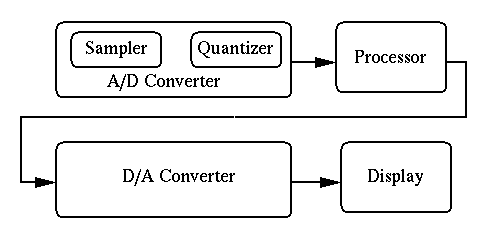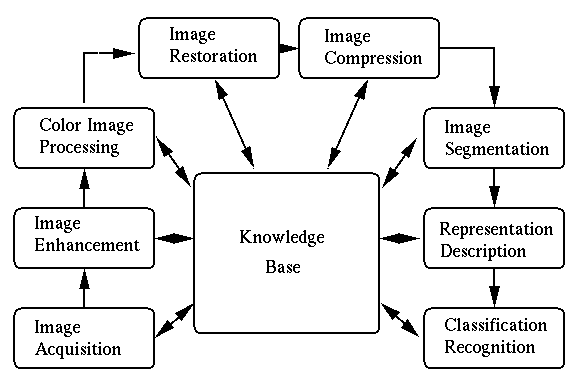Introduction - The Big Picture
Image Processing and Related Fields
Computer vision is in parallel to the study of biological vision, as a major effort
in the brain study.
In this class of Image Processing and Analysis, we will cover some basic
concepts and algorithms in image processing and pattern classification. The specific
topics to be discussed in the course are some subset of
these topics.
A popular textbook in image processing is
Digital Image Processing, 4th edition
Applications of Image Processing
Visual information is the most important type of information perceived,
processed and interpreted by the human brain. One third of the cortical
area of the human brain is dedicated to visual information processing.
Digital image processing, as a computer-based technology, carries out
automatic processing, manipulation and interpretation of such information,
and it plays an increasingly important role in many aspects of our daily
life, as well as in a wide variety of disciplines and fields in science and
technology, with applications such as television, photography, robotics,
remote sensing, medical diagnosis and industrial inspection.
- Computerized photography (e.g., photoshop)
- Space image processing (e.g., Hubble space telescope images,
interplanetary probe images)
- Medical/Biological image processing (e.g., interpretation of
X-ray images, blood/cellular microscope images)
- Automatic character recognition (zip code, license plate recognition)
- Finger print/face/iris recognition
- Remote sensing: aerial and satellite image interpretations
- Reconnaissance
- Industrial applications (e.g., product inspection/sorting)
Different Types of Tasks
- Image acquisition, storage, transmission:
digitization/quantization, compression, encoding/decoding
- Image Enhancement and Restoration:
for improvement of the quality of the pictorial information for human
interpretation, both input and output are in the image form (e.g., the
first few application examples above).
- Image Understanding and Image Recognition:
information extraction from images for further computer analysis
(e.g., the rest of the application examples above).
Input is in image form, but output is some none image representation
of the image content, such as description, interpretation, classification,
etc.
- Pre-processing stage of computer vision of an artificial
intelligent system (robots, autonomous vehicles, etc.).
Fundamental Steps in Digital Image Processing


These steps roughly correspond to the visual information processing in the
brain.

